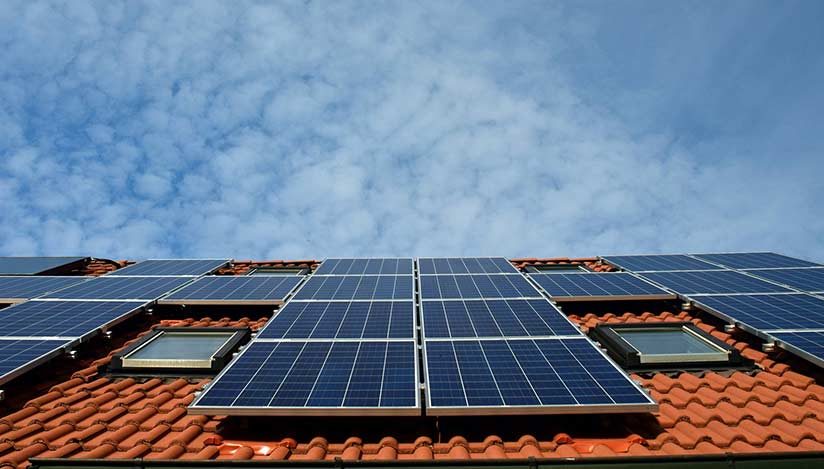How Many Solar Panels Do You Need For Your Home?
When customers ask us about installing a new solar power system, they’re often thrilled at the idea of completely zeroing out their yearly energy bill. After all, how great would it be to not have to worry about paying anything but your utility company’s monthly maintenance fees?
But deciding how much roof real estate to cover up with panels isn’t an easy decision. Solar panels are pretty noticeable. We’re often asked, “How many solar panels do I need?” No two customers’ energy needs are the same, so our answer is usually, “It depends.” But we can show you how to begin answering that question for yourself.
Estimate your average monthly energy usage.
To the surprise of some of our customers, the size of their home has very little to do with sizing a solar power system, beyond the maximum size your system can be due to the roof space available. While in some respects it’s accurate that larger homes have greater energy demands (more space to heat or cool, and so on), there are many exceptions. After all, a 2,500 square foot house may be home to a retired couple that goes to bed at 8:30 every night, while a 1,500 square foot home may have four kids and their parents living in it, with a heated pool in the backyard. Odds are it’s not the retirees who are going to be getting hit with pricey energy bills each month.
When we’re preparing a quote for customers, what we really care about is how much electricity they use, because this is what determines the size of the system needed to offset that usage. When we’re calculating an energy quote for a PG&E customer, we’re able to call the utility company through a designated contractor line and pull historical usage data. SMUD doesn’t have this feature, but instead provides access to historical usage data through an online application called UtilityAPI.
As time goes on, services like UtilityAPI will likely be the future of how we generate quotes, as we can collect data on usage behaviors on an hour-by-hour basis. This level of accuracy for projecting energy costs is becoming necessary due to the advent of time-of-use rates (or ‘time-of-day’ rates, as SMUD calls them). A few years ago, there would have been no difference between two families that used the same amount of energy on different schedules. Today, under time-of-use rates, households that use the bulk of their electricity in the early evening may pay twice as much as those that use the same amount of electricity, but avoid doing so during peak-cost early evening hours.
While it’s difficult to estimate your energy costs based on your habits alone, you can still pencil out a back-of-the-envelope estimate by logging into your SMUD or PG&E account and finding your average usage. However, if you’re already feeling a little overwhelmed by the math—and there’s still more to come—we recommend that you give us a call and let us handle the work of putting together an estimate.
But if you still want to figure it out for yourself, here’s what you do once you have your usage information.
Determining how big of a solar power system you’ll need to cover your energy costs.
Let’s say that when you log into PG&E’s or SMUD’s website, you find out that you use 12,000 kWh of electricity per year, an average of 1,000 kWh per month. (If you want to be really cautious, you can take the average of the months when you use the most electricity, which is usually in the summer—taking this approach will mean you won’t have to deal with energy bills when your usage is higher than normal.)
Divide this monthly average by 30 (the average number of days in a month) to get a daily average—in the case of our example, about 33 kWh per day. If your goal is to cover all of your energy costs, you need a solar power system that can generate an average of 33 kWh per day.
How big of a system does it take to do that? Well, that’s a complicated question. The amount of power generated by a solar power system depends on where you live, how much shade your house gets, and the time of year. Solar power systems are rated on the number of kilowatts of energy they can produce in a given moment under the best possible conditions. A reasonable rule of thumb is that for every kilowatt that a solar power system can generate, it will produce about 3 to 4.5 kWh of energy per day, depending on conditions. Let’s take the average and call it 3.75 kWh for every kilowatt that a solar system is rated for.
So, if you take your average daily energy usage in kWh, and divide it by 3.75, that will tell you roughly how many kilowatts your solar power system would need to be rated for to cover your average bill. In our example, dividing 33 kWh per day by 3.75 equals 8.8, meaning the homeowner in our example would want a solar power system capable of producing a maximum of 8.8 kilowatts, or 8,800 watts. (This means that if it ran at peak performance for one hour, it would produce 8.8 kilowatt-hours. You take the number of kilowatts and multiply it by the number of hours to calculate the number of kilowatt-hours produced.)
Then, it’s just a matter of comparing solar panel models and seeing how many panels of a particular model you would need.
Our example homeowner knows they need a solar power system that can produce about 8,800 watts. Individual solar panels are rated for their energy production in watts. This means we can divide our desired total solar power output by the energy production of one panel, and calculate how many solar panels we need.
Many solar panels are rated for 320 watts. Dividing the system output you need by a single panel’s output will give you the number of panels you need. In this case, 8,800 watts divided by 320 watts is 27.5. You’ll need about 27 or 28 panels with an output of 320 watts to meet your goals.
However, not all panels have the same output, and can vary by manufacturer or model. The number of panels needed will increase or decrease depending on this output. Consider the panels made by SunPower, most of which are rated for 360 watts. 8,800 watts divided by 360 watts is 24.4—meaning you would need about three fewer panels than you would if using 320-watt panels. That’s a noticeable reduction that also affects the cost of your system.
As we said earlier, the number of solar panels you need depends on a lot of things, including:
- Your household’s energy usage
- What the weather and shade conditions are like where you live
- How much electricity is produced by the model of solar panel you choose
But let’s stop right there. We know this is a lot of math to take in. If you don’t want to do the math, you don’t have to. Give Capital City Solar a call today, and we’ll make an appointment to sit down with you, figure out your energy usage habits and what future plans you may have—a new electric vehicle or backyard spa—that would increase your usage, and put together an estimate of how large of a solar power system you need to accomplish your goals. Give us a call and let us handle the numbers.

